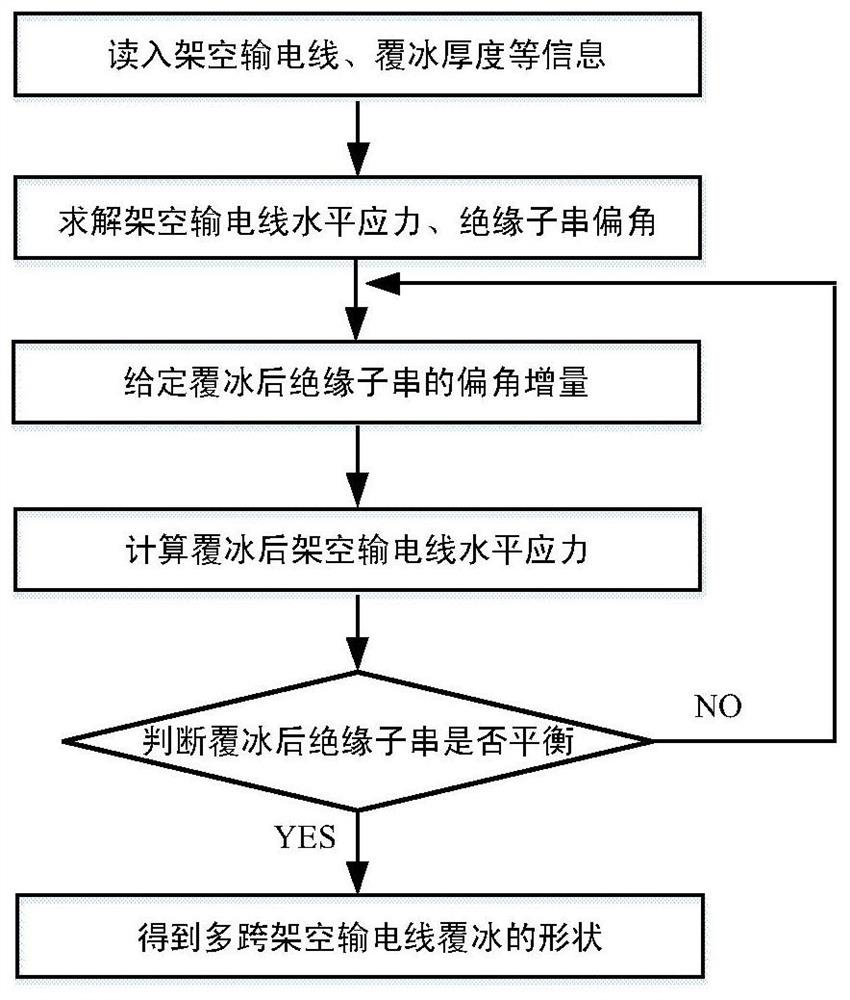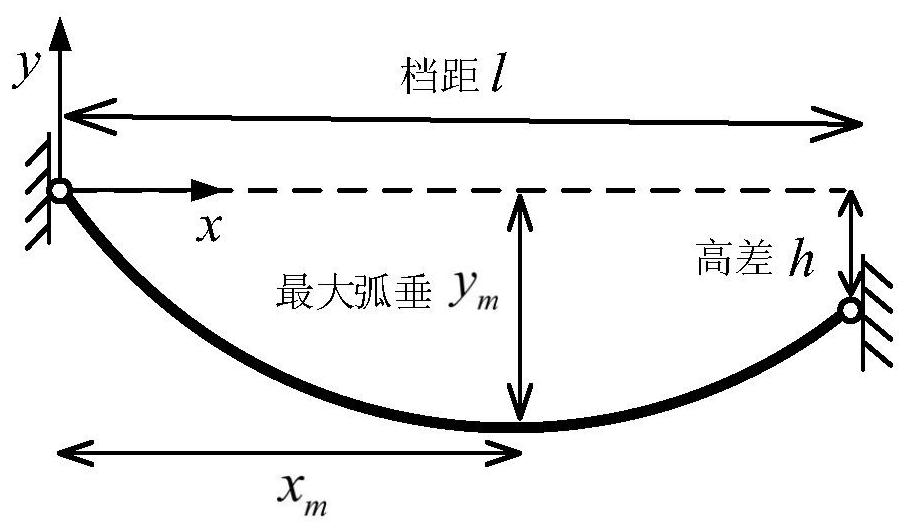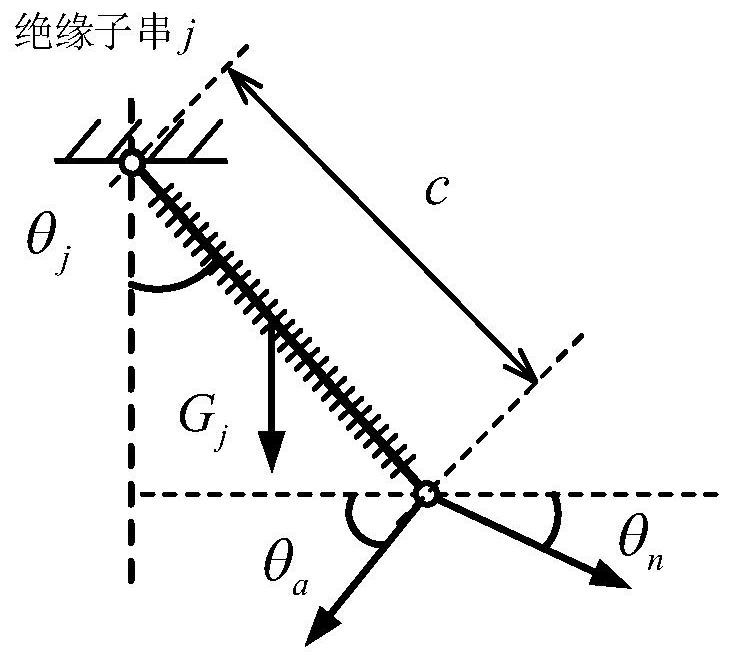Multi-span overhead transmission line icing shape finding calculation method based on energy method
A technology of overhead transmission lines and calculation methods, applied in the field of transmission lines, can solve problems such as inconvenience, heavy workload, and inability to use single-span form-finding methods
- Summary
- Abstract
- Description
- Claims
- Application Information
AI Technical Summary
Problems solved by technology
Method used
Image
Examples
Embodiment Construction
[0080] In order to make the purpose, technical solutions and advantages of the embodiments of the present invention clearer, the technical solutions in the embodiments of the present invention will be clearly and completely described below. Obviously, the described embodiments are part of the embodiments of the present invention, rather than All the embodiments; based on the embodiments of the present invention, all other embodiments obtained by persons of ordinary skill in the art without making creative efforts all belong to the protection scope of the present invention.
[0081] Such as Figure 1~6 As shown, the embodiment of the present invention provides a form-finding calculation method for icing on multi-span overhead transmission lines based on the energy method. The multi-span overhead transmission lines include K overhead transmission lines sequentially connected by K-1 insulator strings, including The following steps:
[0082] S1. Obtain the initial uniced basic da...
PUM
 Login to View More
Login to View More Abstract
Description
Claims
Application Information
 Login to View More
Login to View More - R&D
- Intellectual Property
- Life Sciences
- Materials
- Tech Scout
- Unparalleled Data Quality
- Higher Quality Content
- 60% Fewer Hallucinations
Browse by: Latest US Patents, China's latest patents, Technical Efficacy Thesaurus, Application Domain, Technology Topic, Popular Technical Reports.
© 2025 PatSnap. All rights reserved.Legal|Privacy policy|Modern Slavery Act Transparency Statement|Sitemap|About US| Contact US: help@patsnap.com



